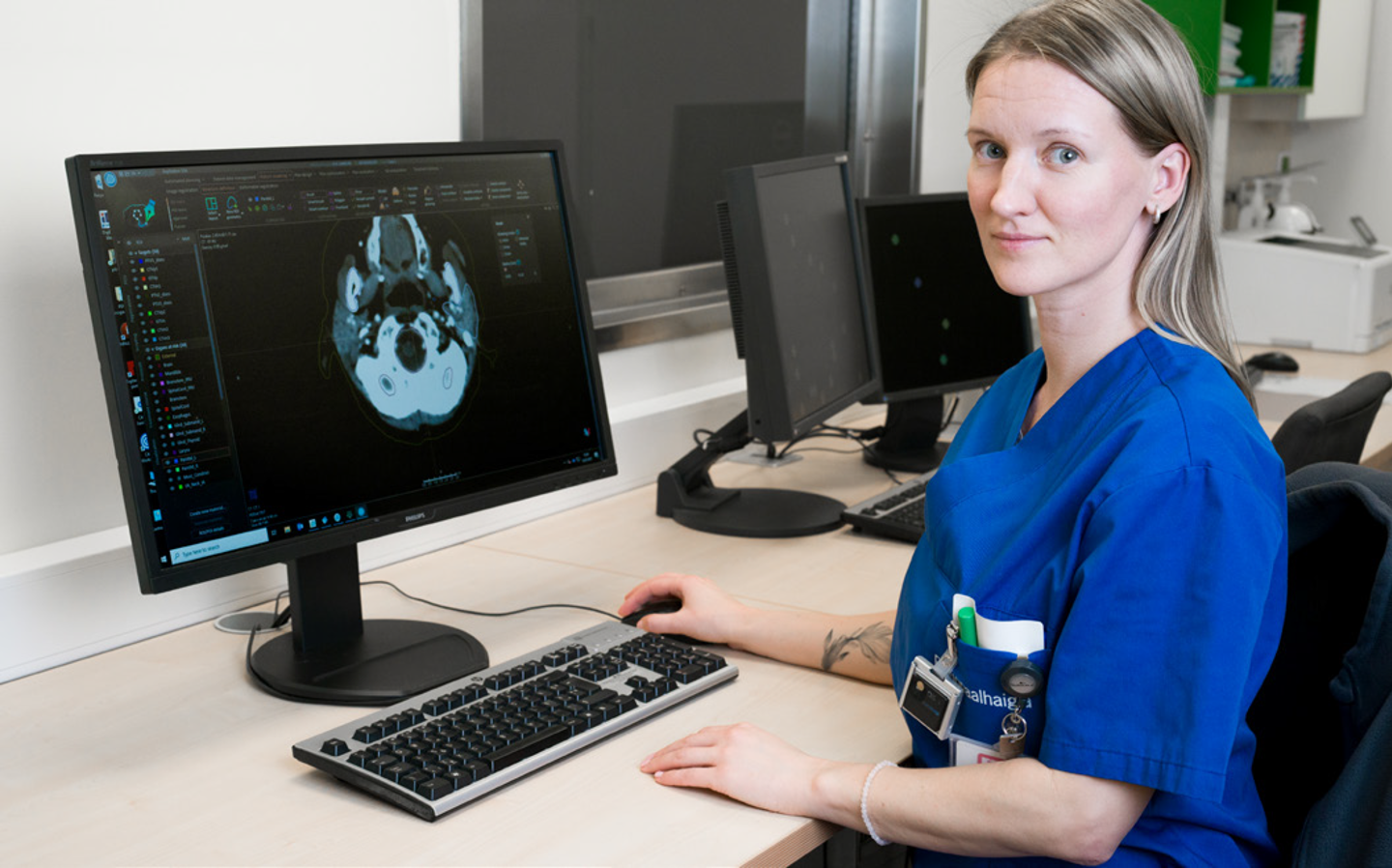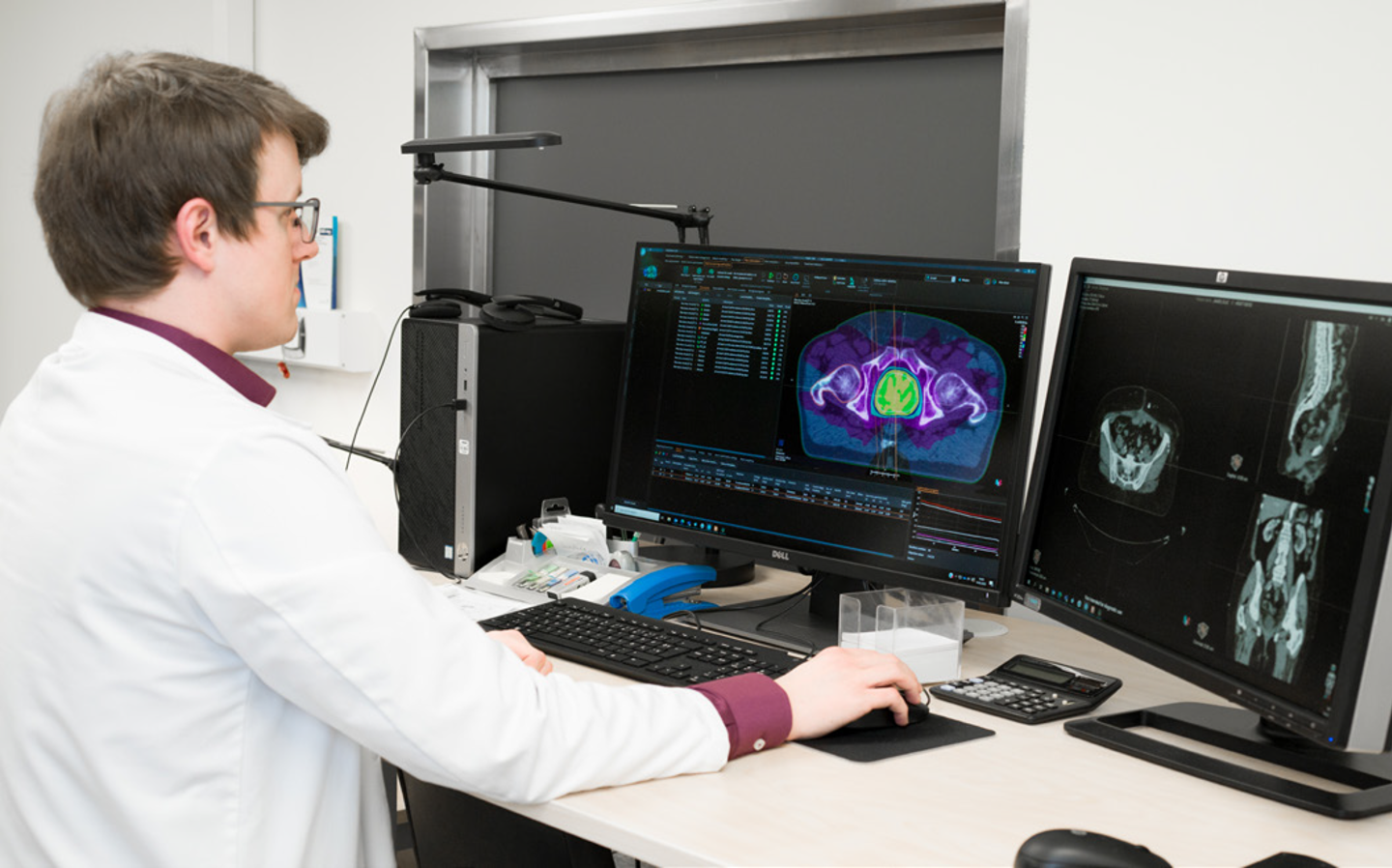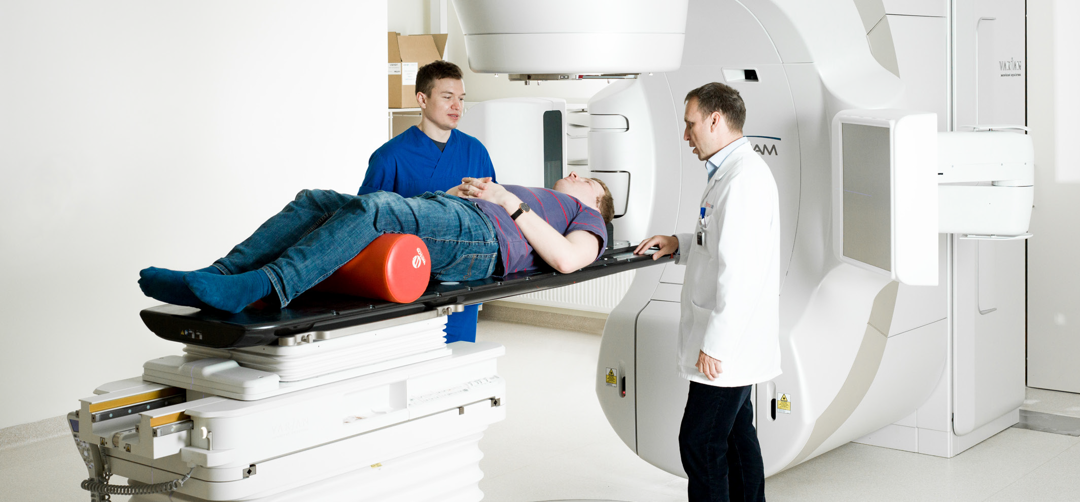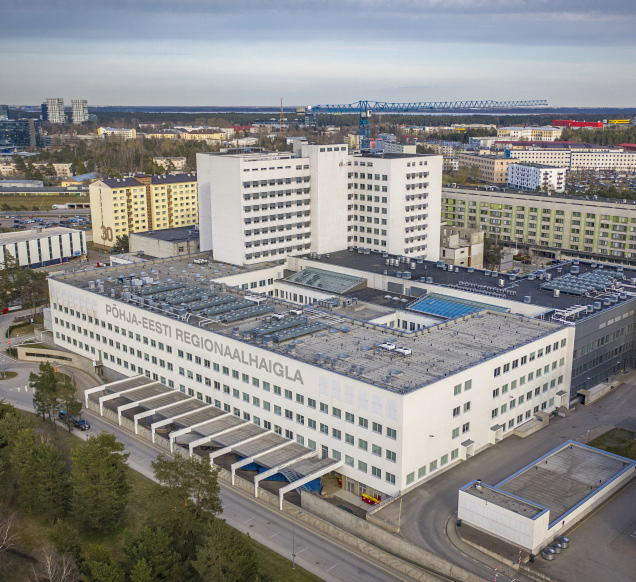Once the evidence was there, we had to ask ourselves, if this level of efficiency brings a benefit to the patient, then why not have it?”

Case study: NORTH-ESTONIAN REGIONAL HOSPITAL, TALLINN
EFFICIENCY GAINS WITH MACHINE LEARNING AND AUTOMATIC PLANNING IN RAYSTATION

The oncology center cites knowledge sharing, education, research, and embracing innovative technology as top priorities in their mission to provide the best possible radiation therapy to their patients.
Until 2020, the center had utilized multiple treatment planning systems after having historically outfitted the radiotherapy department in phases. As a result, physicians and physicists were forced to plan treatments on three different systems.
Wishing to streamline processes and pare down from several treatment planning systems to a more integrated and simplified workflow, the center teamed up with RaySearch to help attain this goal. In August 2020, the center began treating patients with the RayStation treatment planning system.
“We wanted one system with all the possibilities, which is why we turned to RaySearch. The vendor neutral approach was what sold us", says the center’s chief medical physicist, Eduard Gerškevitš.
The goal was to improve workflows and radiotherapy data management by switching from a previous and more fragmented set-up to RayStation, with RayCare Flow chosen as the center's treatment planning workflow engine. Drawn by the functionality and philosophy of the system itself, and the ability to access all radiotherapy platforms in one place, the choice was obvious.
“Once the evidence was there, we had to ask ourselves, if this level of efficiency brings a benefit to the patient, then why not have it?” asks Gerškevitš.
INSTALLATION AND IMPLEMENTATION
RayStation was purchased in March 2020, and soon after, the COVID-19 pandemic hit Europe. While this created challenges, the project persevered, and the entire implementation, installation and system configurations were completed in June. Practicing a phased implementation, all processes were migrated from the center’s three previous treatment planning systems to RayStation.
The first steps were to train staff on the system and learn to create and validate beam models. By August 2020, the first patients were being treated. By October, the center was treating patients with 3D, IMRT and VMAT, and by early 2021, SBRT and SRT were utilized. RayCare Flow use began in January 2021. Initially, two clinicians were brought onboard to master the system, and all clinicians at the center are now using RayStation.
The center cites having one system for all practitioners to work from as the greatest benefit of RayStation. All data is in one place, and new treatment plans can be created in RayStation with all radiotherapy operations available in one convenient platform.
The center plans to prioritize more scripting and automation in 2022, hoping to automate as many tasks as possible. Clinical staff report better quality of plans in much less time due to impressive calculation speed. Contouring, planning and dose calculation times are all much faster and more efficient compared to the clinic’s previous systems and equipment. Additionally, plans are created with more accuracy and precision. Future plans include incorporating RayStation’s machine learning* for segmentation to improve contouring speed and consistency.
MACHINE LEARNING AND AUTOMATIC PLANNING
In Summer 2021, the first machine learning prostate model for automatic planning was obtained. Seventy prostate patients were planned for during a six-month period. For many patients there were similarities between the manual plans and machine learning plans, with the added benefit of improved harmonization between the physicists’ planning techniques, as well as the ability to improve upon manual planning by using and referencing the machine learning plans. These results illustrate that machine learning can help unify the treatment planning process, thus conserving time and clinical resources. It is a valuable tool that helps physicists to reach consensus and create more harmonized and optimal plans.
For organs at risk, the used dose-volume points were checked only at medium-high doses and stopped at 30 Gy. “Once you start to evaluate this with machine learning, you can immediately see a difference. Machine learning is always consistent and DVH is lower at low dose points,” Gerškevitš explains.
Now all prostate patients are run through machine learning as the primary planning method with manual planning used as a fallback method for the minority of outlier cases.
The prostate planning model is based on a model released by RaySearch, which was configured to meet the specific goals of the clinic. The configuration was done with support from RaySearch by sending five patients and plans with the desired clinical goals as input. The clinic then commissioned the reconfigured model by evaluating the model’s performance on five to ten cases. The machine learning plan is created, either through scripting, or via a simple plan creation dialog and by using a "play" button in RayStation. This is a great utilization of RayStation’s capabilities that also saves the physicists’ time.
FUTURE PLANS FOR MACHINE LEARNING MODELS
The clinic plans to begin using machine learning planning models for head and neck cancers in the first quarter of 2022, and later for gynecological cases. Machine learning unifies planning among physicists, and therefore the clinic plans to use it for all body sites, due to the additional layer of security and confidence brought about by an extra source of accuracy.
* Subject to regulatory clearance in some markets


Timeline


EFFICIENCY GAINS
Manual planning discussing various approaches normally takes about one hour with all hands on deck. Machine learning planning takes much less time, approximately 10 minutes, providing “hands off time” that allows physicists to focus on other tasks simultaneously. Plans can be created via scripting and plan explorer and can also be done offline. For each target type there is a pre-defined set of model configurations based on different strategies, e.g. target conformity or OAR sparing. These multiple plans can be generated with one click, allowing the user to select the best option for the current patient. With RayStation 11B* which Tallinn is soon moving to, machine learning planning will reliably be in the time range of approximately 10 minutes on 2 mm dose grid.
The ability to treat more patients in less time is an attractive benefit of machine learning planning – the ability to visualize and plan more treatments means more treatments are delivered. The number of patients the clinic can offer VMAT or IMRT plans to has therefore increased. Previously there was a strict limit on the number of patients that could be treated at any given time due to the limitations of the old treatment planning systems themselves. This is no longer the case. The ability to automatically create multiple treatment plans allows clinicians to compare techniques they may not have produced during manual planning, ensuring the best possible treatment plan for the patient is created.
Manual planning is still a priority at the center, as users should not lose valuable manual skills, and the clinic should not lose the human component of treatment planning. The benefit of machine learning planning is that it can be used in tandem with manual planning, allowing practitioners to further hone and develop those skill sets.
RAYCARE FLOW - FULL INTEGRATION WITH RAYSTATION AND A MORE EXPEDIENT CARE PATH
“RayCare Flow integration with RayStation is seamless, it brings you to the exact module of RayStation you need, following your planning workflow,” states Gerškevitš. The center wants to see that type of integration with all radiotherapy equipment in the entire department.
Another advantage of RayCare Flow is that different tasks are automatically pushed to different members of the care team. This provides a clearer view of the patient’s treatment journey and how the care path is progressing - automated, online, in real time. Whether someone takes the patient for contouring, planning is in progress, or the plan is complete, everyone involved in the patient’s care knows at which phase of the workflow the patient is in.
“The overview aspect of RayCare Flow is fantastic. Once a clinician has reviewed and approved a contour, the entire care team is informed – this is one of the greatest benefits of RayCare Flow,” Gerškevitš affirms.
The center cites the integration aspect of RayCare Flow and RayStation as a major step forward in providing comprehensive cancer care. Through the combined utilization of these innovative software platforms, and the potential of machine learning, the center’s mission of providing the most advanced and personalized cancer treatment methods on the market becomes tangible.
* Subject to regulatory clearance in some markets
IN THE PIPELINE
Q1-Q2 2022 Plan for use of machine learning planning for head and neck cancers, then gynecological cases. Ultimately, the center plans to transition to utilizing machine learning planning to treat all body sites.
ADVANCING CANCER TREATMENT
RaySearch is a committed pioneer of oncology software. Since 2000, we have worked in close cooperation with leading centers to improve life and outcomes for patients. We develop all our products from the ground up and continuously revise every aspect, from algorithms to user interface designs. Medical science never stands still, and neither does RaySearch — our relentless drive to do things better leads us to ever-higher performance, accuracy, safety and usability.
And this is just the beginning. We believe software is the driving force for innovation in oncology. Our systems use groundbreaking automation and machine learning to create new possibilities. RayCare*, the next-generation oncology information system, will enable one workflow for all the oncology disciplines, ensuring fluid coordination of tasks and optimal use of resources. RayStation* harmonizes treatment planning, providing one point of control for all planning needs — any equipment, any scale.
*Subject to regulatory clearance in some markets
For more information or to see a demo, contact sales@raysearchlabs.com
